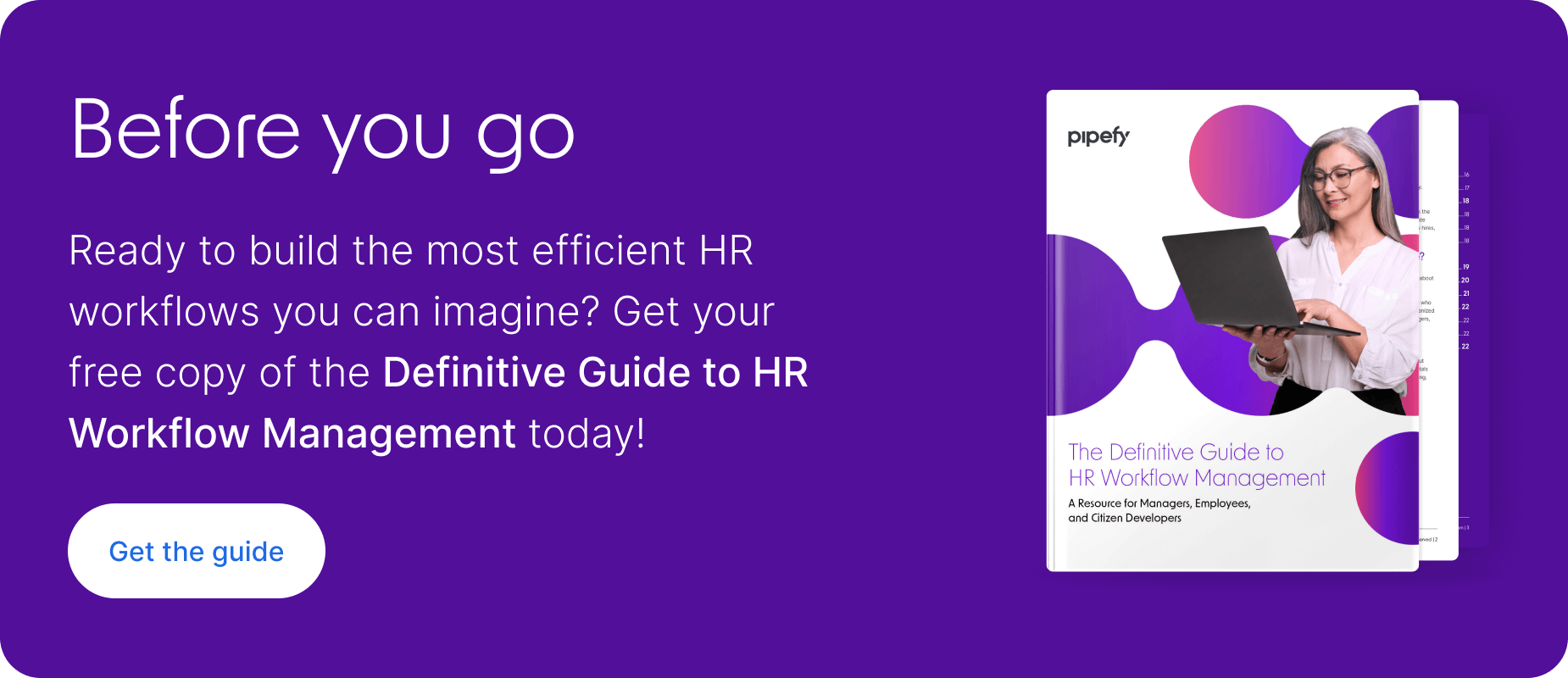
While the employee onboarding process generally involves warm welcomes and hopeful anticipation, employee offboarding often is rushed or skipped altogether. Companies who fail to develop and optimize their systems miss opportunities to gain valuable information, placing your organization at risk for lawsuits and security breaches.
Keep reading to learn the ins and outs of employee offboarding, how the process can benefit your company, the steps you should take to offboard an employee, and how automating the process can improve employee relations and public perception.
What is Employee Offboarding?
Employee offboarding is a formal separation process that occurs after an employee resigns, retires, or is terminated. Steps in this process include reassigning job tasks, deactivating passwords, collecting company equipment, conducting exit interviews, and more.
At first glance, it can seem like a lot of work for a small return on investment. But having an efficient employee offboarding process results in many benefits, including cost savings, prevention of data security breaches, and improving team morale.
Smooth Separations: the Benefits of Doing Employee Offboarding Right
Employee offboarding is a part of the whole employee lifecycle. Creating a streamlined process makes the transition easier for everyone involved, including the employee, the HR, IT, and Finance team, team leads, and clients. Informing all parties as early as possible about an employee’s departure ensures that the information is communicated accurately and prevents tasks from falling within the cracks. For instance, when the IT team isn’t aware that an employee is no longer with the company, they won’t know to remove employee access to confidential information, resulting in data leaks.
Former employees can also claim wrongful termination under the Families and Medical Leave Act. Without proper filing and documentation, your organization could find itself at the heart of a scandal. Employers may need to implement tight offboarding controls to meet industry guidelines and regulations.
An effective employee offboarding process builds a security and compliance culture that protects the employer from liability, preserves team productivity, and potentially saves the company money. Even when an employee isn’t leaving on the best terms, the offboarding process is an opportunity to end the relationship on a positive note.
The size of your company, industry regulations, and the employee’s role will determine your specific approach, but having a offboarding checklist will help you complete the transition with minimum disruption, close out any loose ends, and maintain confidentiality and data security.
Employee Offboarding Checklist
There are many moving pieces to employee offboarding, and having a standardized process can prevent anxiety and panic when an employee resigns. Creating a checklist will help you organize each task so every team member, including the departing employee, understands what to expect.
1. Create an Offboarding Checklist for HR and the Employee
Employee offboarding is a team effort, and the HR department and the departing employee have unique responsibilities. For instance, an HR checklist may include filing the resignation letter, scheduling an exit interview, updating the HR database, preparing final documentation, reimbursements, and payments. An employee offboarding checklist may involve a transfer of knowledge plan, removing personal items from desk or locker, returning devices, and updating contact information.
2. Prepare for Knowledge Transfer
Don’t wait until the last minute to start transferring knowledge; ensure that it is a part of every employee’s general work responsibilities. Develop a list of duties, procedures, and tasks to help the departing employee’s successor hit the ground running.
Determine if replacement training is needed, decide if the employee needs to complete a file or drive backup, and schedule final deliverables and due dates.
3. Conduct an Exit Interview
Exit surveys are an excellent way to gain valuable feedback about your work environment and identify trends in the market. The HR team should schedule and keep records of exit interviews. You want employees to feel comfortable speaking freely, so it’s best to have the session led by a trusted team member.
You may also choose to administer the exit interview as an anonymous survey. Keep questions short and straightforward to get to the root of the reason for leaving. Communicate your findings to your team and, if necessary, make changes to improve company culture.
4. Recover Company Assets and Revoke Systems Access
Your IT department should be a key player in the offboarding process. It is up to IT to immediately deactivate email accounts, revoke access to in-house software, third-party tools, company databases, and shared drives.
The departing employee may also need to return assets such as credit cards, keys, phones, laptops, tools, badges, uniforms, etc. Audit the returned items and prepare reimbursement requests for any missing assets.
5. Complete Final Pay Process
One of the last things to do during employee offboarding is to issue final payments— outstanding wages, unpaid commissions and expenses, severance, unused vacation pay, and health spending account balances. Ensure the HR team is also available to provide a status letter and answer questions about reimbursements.
6. Provide Letters of Reference and Closing Documentation
Now it’s time to prepare closing documentation, such as tax and benefit information, final payroll, and non-disclosure agreements. The leadership and legal team should review copies of all agreements and disclosures.
At the end of the employee’s offboarding, provide a letter of reference that acknowledges the employee’s contributions and positively speaks to their time with the company. If departing on a good note, invite the employee to stay in touch and join an alumni program if available.
Standardize and Automate the Employee Offboarding Process with Pipefy
Creating an effective employee offboarding process can lead to a culture of open communication, ongoing productivity, cost-savings, and protection against certain liability. Still, it can be a lot to coordinate. Pipefy is a business process management solution that can help ensure consistency, completeness, and the best employee offboarding experience for your team. You can automate each step of the process using the Employee Offboarding template to:
- Standardize: Customized forms make it easy to begin the employee offboarding process and prevent errors by gathering all the necessary employee data, including name, role, date offboarding, etc.
- Automate: You want to communicate with an employee’s resignation immediately to deter gossip and ensure efficiency, so everyone knows their part. Use the Employee Offboarding template to update all stakeholders involved in the process automatically.
- Connect: Link all aspects of the offboarding process to create a unified workflow, such as hiring, onboarding, performance evaluation, and offboarding, while integrating departments like HR, IT, and Finance. This collaborative approach results in easy, mistake-proof offboarding, and seamless handoffs.










